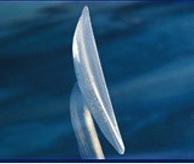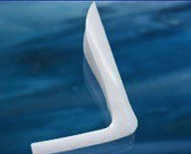Certain types of rhinoplasty surgery requires considerable augmentation to achieve its aesthetic effects. This is most commonly seen in the need for bridge or dorsal line augmentation but can extend to include the tip as well. This is most frequent in ethnic Asian or African-American rhinoplasties but can be needed in other nasal shape conditions as well. (e.g., saddle nose deformity)

But as would be surmised, the use of synthetic implants in the nose is not without potential complications and the need for revision rhinoplasty with them is not rare. Nasal implant complications can include infection, displacement, malposition and skin thinning/exposure. Should any of these occur the intraoperative question is whether the implant should be ‘recycled’ and reimplanted or even a new one put in.
In the May issue of the Annals of Plastic Surgery journal, an article entitled ‘Immediate Re-Insertion of Non-Autologous Materials in Revision Augmentation Rhinoplasty’ was published. In this paper the aim was to determine whether immediate re-insertion of an implant in revision augmentation rhinoplasty produces an uncomplicated and favorable aesthetic outcome. Eleven patients who had immediate re-insertion of their implants were analyzed. Nine of the eleven patients (81%) had favorable aesthetic outcomes. One patient had a recurrent infection and another patient had implant displacement. These two unsuccessful patients shared the similarities of a silicone implant and using an endonasal approach for their surgeries.

Nasal implants are also uniquely hard to reposition if displaced. The implant capsule has a smooth surface as does a silicone implant. Adjusting an implant’s pocket, unless some method of form fixation is used for the implant, is fraught with the potential of sliding back into its original displaced location.
Dr. Barry Eppley
Indianapolis, Indiana


